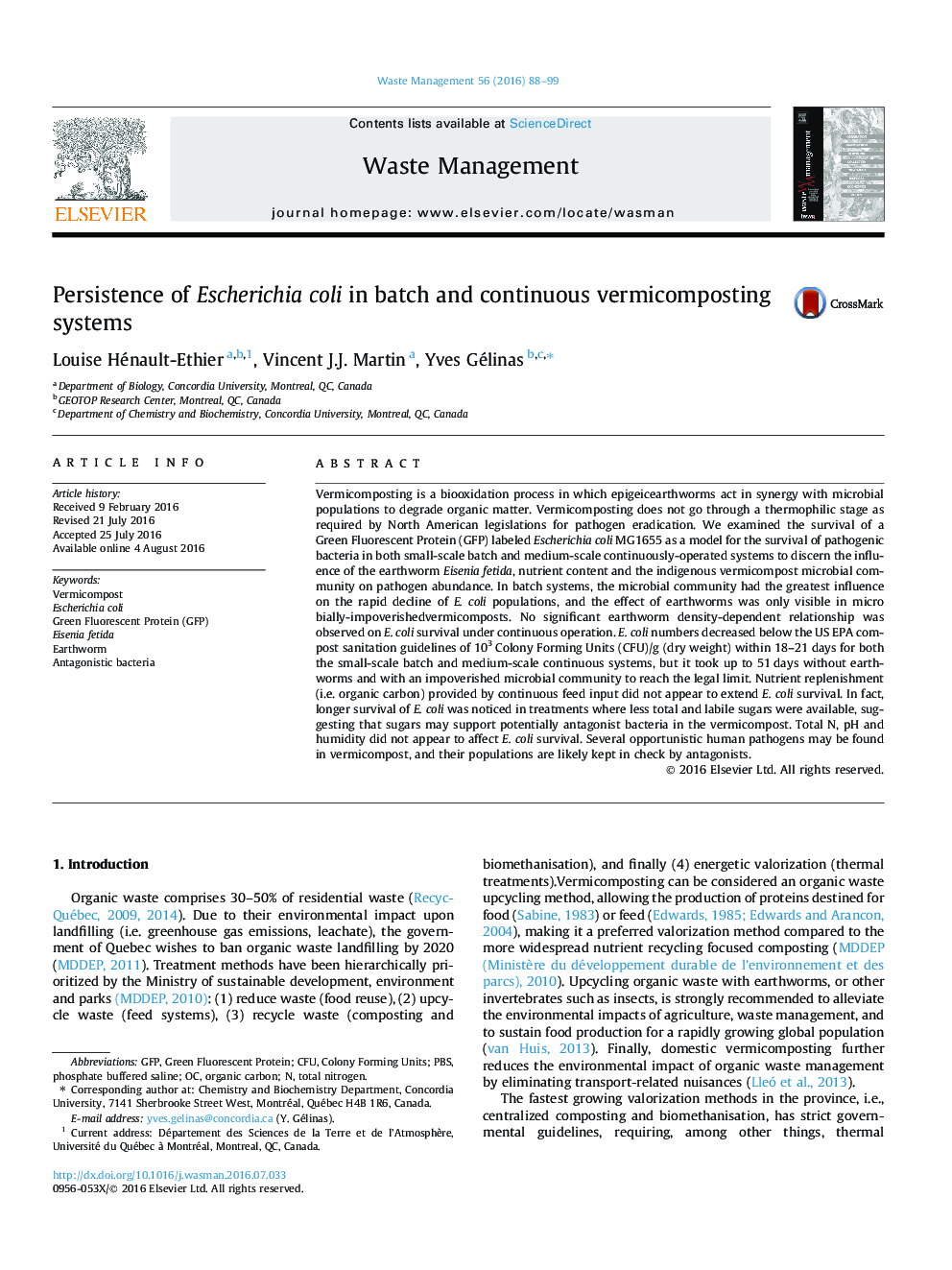| کد مقاله | کد نشریه | سال انتشار | مقاله انگلیسی | نسخه تمام متن |
|---|---|---|---|---|
| 4471116 | 1622630 | 2016 | 12 صفحه PDF | دانلود رایگان |
• Escherichia coli survives less than 64 days in vermicompost.
• Microbial communities affect E. coli survival; earthworms’s role is secondary.
• Antagonistic bactericidal effects appear as a plausible mechanism.
• Sugars appear important, as opposed to total labile C, N, pH and humidity.
• Operational scale and feed input do not impact E. coli survival.
Vermicomposting is a biooxidation process in which epigeicearthworms act in synergy with microbial populations to degrade organic matter. Vermicomposting does not go through a thermophilic stage as required by North American legislations for pathogen eradication. We examined the survival of a Green Fluorescent Protein (GFP) labeled Escherichia coli MG1655 as a model for the survival of pathogenic bacteria in both small-scale batch and medium-scale continuously-operated systems to discern the influence of the earthworm Eisenia fetida, nutrient content and the indigenous vermicompost microbial community on pathogen abundance. In batch systems, the microbial community had the greatest influence on the rapid decline of E. coli populations, and the effect of earthworms was only visible in microbially-impoverishedvermicomposts. No significant earthworm density-dependent relationship was observed on E. coli survival under continuous operation. E. coli numbers decreased below the US EPA compost sanitation guidelines of 103 Colony Forming Units (CFU)/g (dry weight) within 18–21 days for both the small-scale batch and medium-scale continuous systems, but it took up to 51 days without earthworms and with an impoverished microbial community to reach the legal limit. Nutrient replenishment (i.e. organic carbon) provided by continuous feed input did not appear to extend E. coli survival. In fact, longer survival of E. coli was noticed in treatments where less total and labile sugars were available, suggesting that sugars may support potentially antagonist bacteria in the vermicompost. Total N, pH and humidity did not appear to affect E. coli survival. Several opportunistic human pathogens may be found in vermicompost, and their populations are likely kept in check by antagonists.
Journal: Waste Management - Volume 56, October 2016, Pages 88–99
